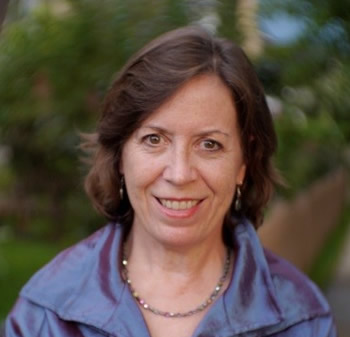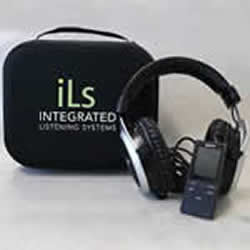Biodynamic Massage
What if you were guided in real-time not only through technique but also via feedback from the client’s autonomous nervous system—objective feedback from the client’s body, as well as what the client volunteers about his/her body and intuition during your therapy sessions?
Sound mechanistic? Perhaps too medically invasive?
In truth, it is possible to humanly obtain immediate feedback from the body, using a stethoscope (an electronic or ordinary one) to listen to the clients’ digestive system’s sounds, the psychoperistalsis. The sounds we hear reveal intriguing information about the level of accuracy, quality, and attunement of the touch we’re applying.
Ah, yes, I did say touch. In the United States I hear the word conjures immediate questions of ethics and appropriate use while in my field and in the global communities where I work and teach, biodynamic massage is an integral part of biodynamic psychotherapy, which allows psychotherapeutic work within the framework of the body.
The name ‘biodynamic massage’ encompasses fourteen different methods of touch. Almost all the touch methods can be performed at different levels of the body – the level of bones, of the periosteum, the deep and superficial muscles, the fascia, which contains the muscles, the subcutaneous tissues, and the different levels of energy.
Touch, however, modulates experience by context and internal state, especially Affective Touch. For instance, touch impacts upon our internal state and activates a cascade of humoral (for example, oxytocin) and neurobiological mechanisms which in turn activate deep psychobiological changes. Different qualities of touch can have qualitatively different psychobiological impacts.
For example, guided by the stethoscope we could active the digestive system with the biodynamic touch. The digestive system is more active when there is stronger activity of the parasympathetic nervous system, which subsequently creates greater activity of the vagus nerve – the tenth cranial nerve of the parasympathetic branch of the autonomic nervous system – meaning non-invasive vagal nerve stimulation.
Along with our close bodily listening, biodynamic therapists also receive feedback from the client’s body through objective observations of the body’s posture, breathing, solidity of muscles (hypertonic, hypotenuse, and isotonic), the muscles’ capacity for mobility, and the skin (for example, skin color, temperature and sweating). In addition, we obtain information from objective observations of the sensations, feelings and emotions that arise and subside in our own body.
Here, I define intuition as an impulse arising from within the self to perform one action or another. We need to differentiate between intuition and the actions of psychological defense mechanisms like projective identification and re-enactment.
Over time, biodynamic therapists learn to integrate all this information with the entire history known about the client, including events of trauma and adverse events that occurred during the client’s life. That is how adjustment occurs between the intention and the client’s neurodevelopmental process.
Every patient is an entire book, a distinctive and pulsing new fabric.
All theoretical knowledge is solely theoretical when the therapist starts working with a client: it must be discarded in favor of the direct experience of processes unfolding here and now.
The therapist has to respond in an attuned fashion to the living phenomena of this particular client in this particular relationship, in this moment of now, without any agenda or predisposition.
The only constant in living phenomena is change, and the therapist must be attuned to a change taking place in him/herself, in the client at every moment, and in the relationship to the levels of awareness and arousal in the framework of the client’s body and the therapist’s body. The delicate fabric that is woven in the field of relations is formed of countless items, including the therapeutic relations.
Dynamic items change constantly; therefore, biodynamic assessment systems are grounded on evaluating the changes occurring, not only on a static snapshot of the client’s condition. What defines the quality of the work are our bodies – that of the client and of the therapist – in addition to mental processes, intention and attention.
In the living phenomena called human, the landscapes of the mind and the landscapes of the body are one concurrent phenomenon. In the reality of a human, it is impossible to separate between them, only for the therapeutic discourse, which ensues after action.
So, to understand biodynamic therapy as a whole, and biodynamic massage particularly, we have to understand and investigate the human as a living phenomenon, as it is happening now, in real-time.
As biodynamic psychotherapists, our job is not to save or rescue. Our job is to promote and support changes in the person as pulsating living phenomena, as our client wishes. The client can be viewed as a system that has the capacity for self-organization and self-leadership. Psychotherapy is a healing profession and the healer is the client. A good biodynamic psychotherapist will support clients in healing themselves.
Over the following four weeks, I will continue to share thoughts and ideas related to biodynamic massage and biodynamic psychotherapy. I offer my concepts and clinical applications in hopes of stimulating both interest in this process and collegial interactions with you. Please email your thoughts to [email protected] for posting on the SPT Magazine blog and SPT Magazine’s Facebook page. If your post is accepted, she will also request a jpeg file headshot and brief bio to accompany your post.
Dr. Elya Steinberg, MD, is Co-Director of the Centre for Biodynamic Psychotherapy (London School of Biodynamic Psychotherapy). She is a medical doctor and biodynamic psychotherapist who integrates body-psychotherapy, Gerda Boyesen methods and bioenergy with psychological trauma work, martial arts, conventional allopathic medicine and complementary medicine. She interweaves alternative and conventional approaches to allow a person to grow as a holistic complex and improve their well-being. In partnership with Gerhard Payrhuber she facilitates the group ‘Attending to the Silence’ for second and third generation Shoah survivors, perpetrators and bystanders.
[email protected]; www.biodynamic-bodypsychotherapy.co.uk
You can access the PDF here
For those readers wanting proper citations for references made in my blog:
Biodynamic massage
Southwell, C. (1982). Biodynamic massage as a therapeutic tool – with special reference to the biodynamic concept of equilibrium. Journal of Biodynamic Psychology, 3, 40-54.
Biodynamic psychotherapy
Southwell, C. (1988). The Gerda Boyesen method: Biodynamic therapy. In John Rowan and Windy Dryden (Eds.). From innovative therapy in Britain, Chapter 9, pp. 179-201. Open University Press.
Boyesen, G. (1980). Biodynamic concepts and definitions. Journal of Biodynamic Psychology, 1, 90–91.
Boyesen, G. (1981). Introduction. Journal of Biodynamic Psychology, 2.
Boyesen, G. (2001). Body Psychotherapy is psychotherapy. In: M. Heller (Ed). The Flesh of the Soul, 33–44. Berne: Peter Lang.
Lewin F., & Gablier M. (2013). La psychologie biodynamique : Une thérapie qui donne la parole au corps (in French), Le Courrier du Livre
Steinberg E., Bach S., Barker L., Rosella S., Deniflee U., Southwell C., . . . Tanguay D., (2015). Biodynamic body psychotherapy. Collective papers from the 2nd Biodynamic conference. Centre for Biodynamic Psychotherapy, London.
Boyesen E., & Freudl P. (2015). The unfolding of libidinous forces in body psychotherapy. In Marlock, H., Weiss, H., Young, C. & Soth, M. (Eds.). The handbook of body psychotherapy & somatic psychology. Berkeley, CA: North Atlantic Books.
Body-psychotherapy
Heller, M.C. (2012). Body psychotherapy: History, concepts and methods. NY: W. W. Norton & Company, Inc.
Affective Touch
Abraira V.E., & Ginty D.D., (2013). The sensory neurons of touch. Neuron, 79(4). doi:10.1016/j.neuron.2013.07.051.
Ellingsen D.M., Leknes S., Løseth G., Wessberg J., Olausson H., (2016). The neurobiology shaping affective touch: Expectation, motivation, and meaning in the multisensory context. Frontiers in Psychology. Retrieved from: http://dx.doi.org/10.3389/fpsyg.2015.01986
Moberg K. U, (2003). The oxytocin factor. Da Capo press.



